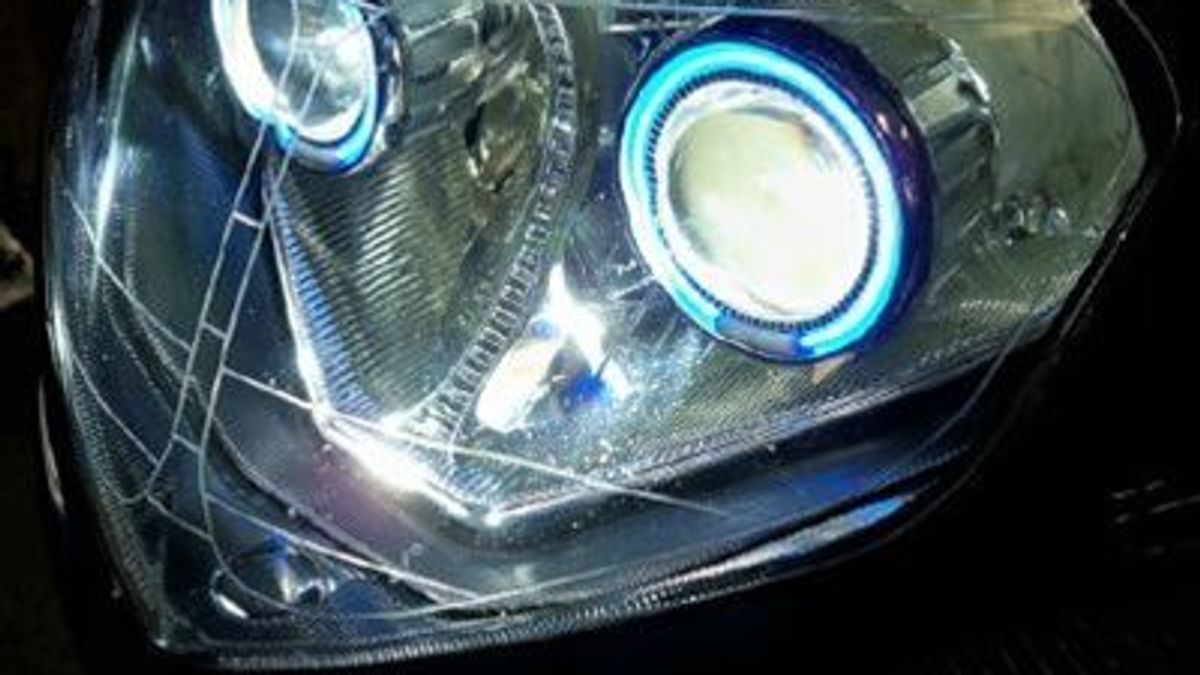
HID Lighting: A Bright Idea?
March 19th, 2010
Categories
by Paul Bindon & Matt Stroud
As you are driving one evening, you round a corner and all of a sudden you are blinded by bluish-white beams, piercing the dark. Face to face with a UFO? 747 landing lights? Entrance to the pearly gates?
You have just witnessed HID lighting at its finest.
High intensity discharge lighting or HID seems to be installed in all sorts of vehicles. It used to be only in high end BMW or Lexus models, now they are in that multi-colored 1985 Honda Civic, truck accessory lighting and even in motorcycles. You might even have them installed on your engines and ladders as floods.
So what are they and how do they work?
The use of HID lighting began in the early 90’s in higher end European models. The US and Japanese manufactures adopted the HID system in the mid 90’s. Lincoln, Acura and Lexus were just a few of the companies using this technology. Since then, almost all manufacturers have offered models with the HID headlight system as standard or optional equipment.
So, how do the HID systems work? To better understand this new technology you must first have a good idea of how conventional headlight systems function. Conventional systems use a bulb containing a filament that produces light when voltage is applied; the same as a standard light bulb you use in your home, these bulbs have a short life span and are fragile. The light produced has a yellowish hue and is rated in watts. Most conventional headlight systems are D.O.T. rated at 55 watts and the voltage they use to produce their light is 12 volts. HID headlight systems work very differently. Rather than using a filament, the HID bulb is comprised of a quartz capsule that contains xenon gas, mercury (2004 & earlier HID bulbs) and metal halide salts with tungsten metal electrodes at each end. An arc is formed in the capsule by a high voltage current that is produced by the HID control unit in each headlight assembly. This control unit draws 12 volts from the vehicle and steps it up to as much as 25,000 volts. Think of it as a controlled lightening strike in a small bottle. The light emitted from this process is rated about 4,000 Kelvin (K). A Kelvin rating is a method used to describe theoretical temperature of color. To put this into a perspective more understandable to us all, a conventional headlight bulb is rated about 2,800 K which produces a yellow or amber colored light. A halogen headlight bulb is rated about 3,200 K. These bulbs produce a much whiter color of light. HID bulbs produce a bluish-white color of light, rated about 5,000 K, which is closest to natural sunlight at midday. Emitting this color of light from the front of a vehicle at night allows the operator the ability to see and react faster and more accurately to obstacles in the road.
So, that’s great, now we all know how the HID system works. That’s fine and dandy but that’s normal operation in a vehicle driving down the road. What happens when the vehicle crashes? As emergency first responders, you know that nearly 99% of vehicles in accidents sustain some sort of damage to the front end. The headlights were probably broken. What about that nice bluish-white light emitting, 25,000 volt headlight system? Well, here is where it gets interesting. The HID system does not care that the car has been damaged; the system is still trying to function. The controlled lightening strike we mentioned still needs a place to go. This can create a serious hazard for first responders who could come in contact with this extremely high voltage. To put this in context, if you have ever been shocked by a spark plug wire on a lawnmower or vehicle, you probably remember how that felt. (!%@*!@) The HID system voltage is a constant 25,000 volts and works more like a taser or stun gun. It has a higher refresh rate and therefore a much higher shock danger and can also pose a greater risk of a fire being ignited.
When responding to a MVA, it is common to need access to the engine compartment for fire suppression or to disable the 12 volt battery. When attempting to open the hood, if hands (or other body parts) come into contact with the rogue high voltage arc, involuntary convulsive reactions can cause personal injury and you will likely be thrown from the vehicle. However, if the HID system has been damaged, the vehicle body itself will not be charged with high voltage, your body must come into contact with the arc. Since the HID output is a low amperage system, the risk of death by electrocution from this system is very low. Obviously, now that you know the facts, care must be taken when approaching the front of any vehicle with HID lighting systems. It is important to know that simply turning the ignition off will not turn off the headlights on most vehicles. They will remain operational until they are turned off at the switch or the 12 volt battery has been disconnected. The 12 volt battery must be disconnected to disable the SRS airbags and this will also disable the HID system. It should be noted that the 12 volt battery may not be located under the vehicle hood. Alternate locations for battery placement is becoming more common, especially on Hybrid vehicles.
As you can see, vehicle technology has advanced to the point where first responder jobs have become more complicated and potentially hazardous. Hybrids, alternative fuel vehicles, SRS airbags and complex body structures are just some of the technologies that can pose complications and hazards when performing a rescue or extrication. Up-to-date training has become one of the most critical tools when dealing with all of these technologies.
Be Safe.